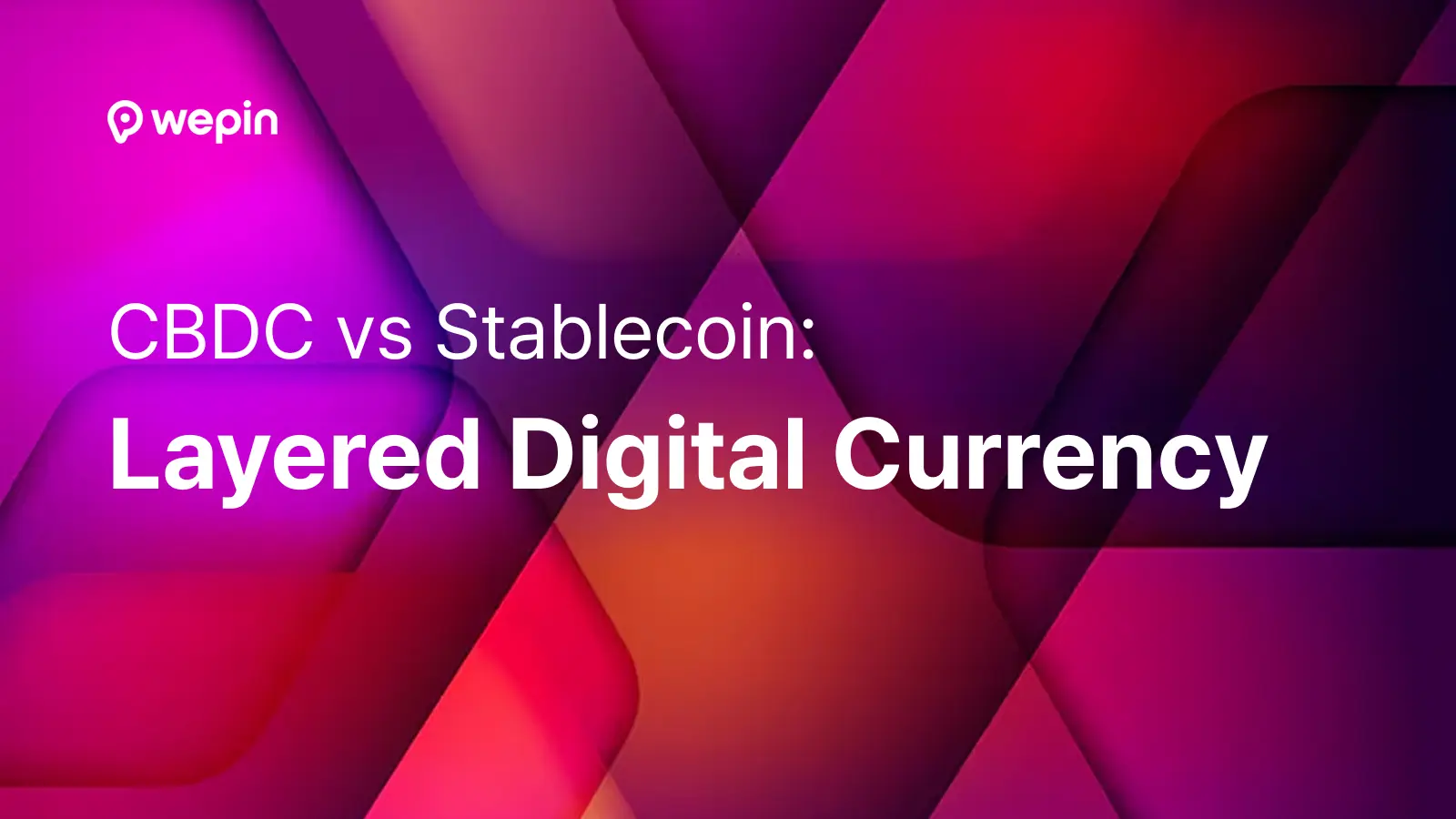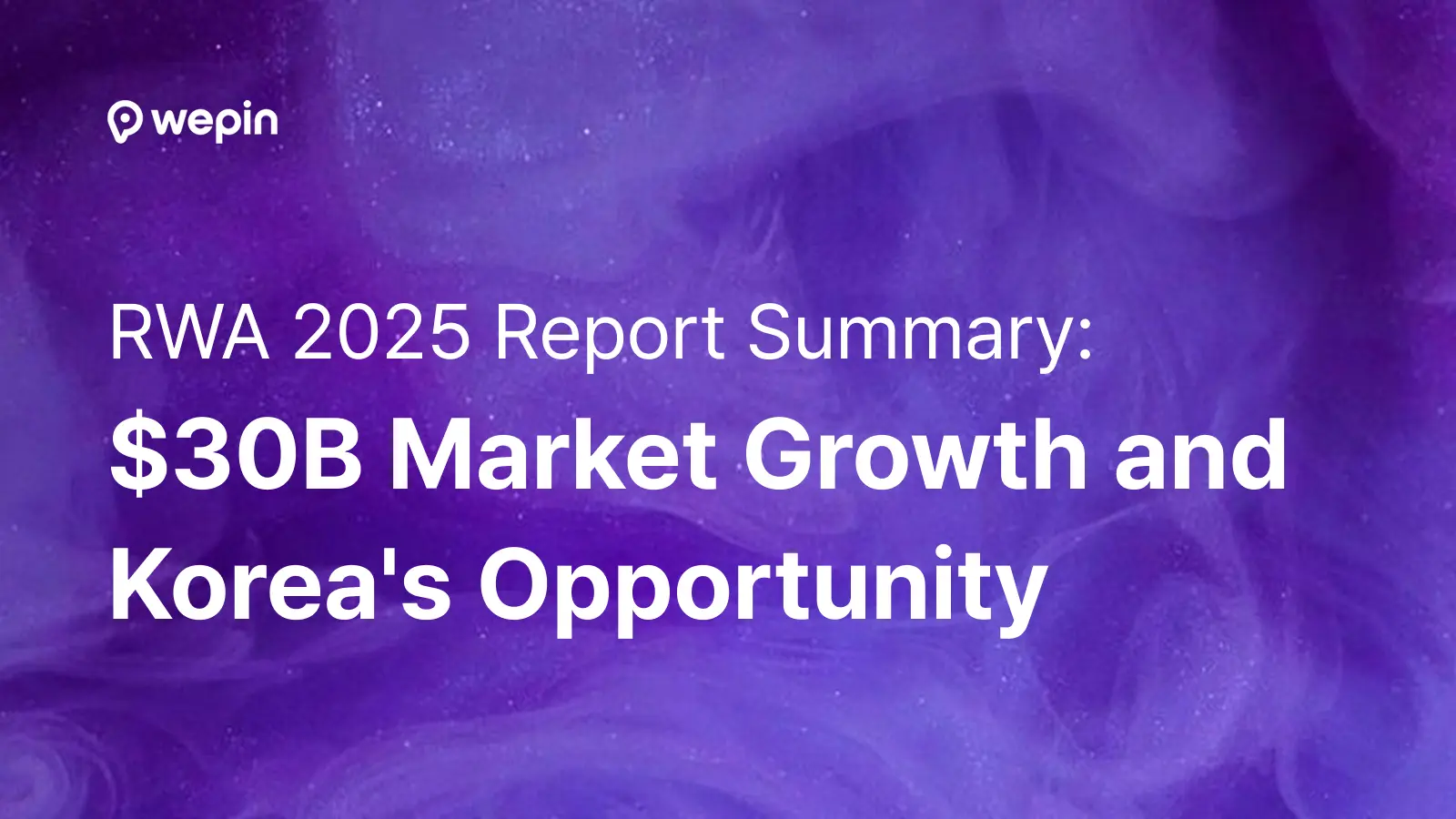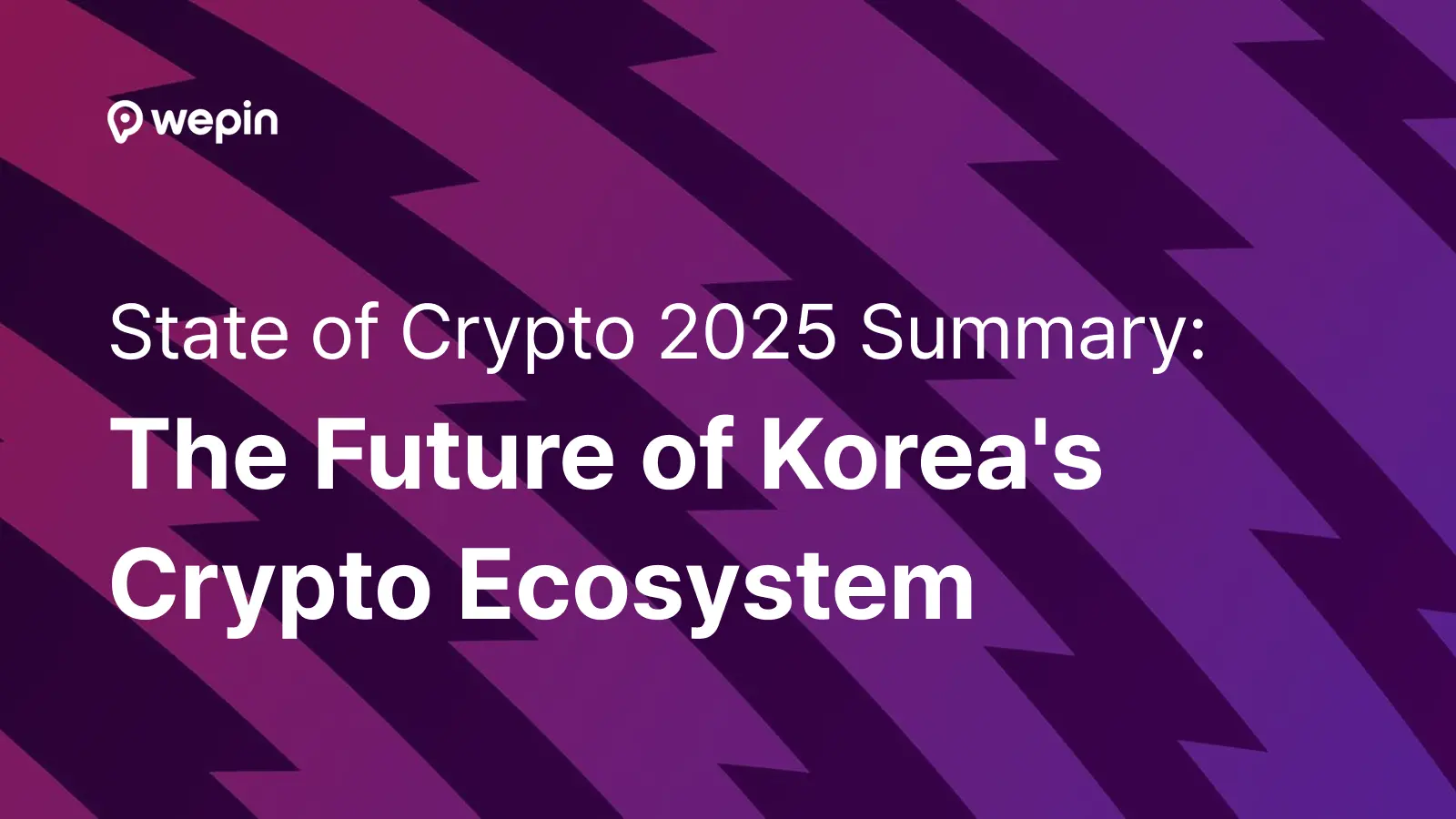[TL;DR]
- While CBDCs aim to preserve central bank monetary sovereignty and stablecoins aim to provide efficient private-sector payment rails, both are evolving in complementary ways to serve diverse user needs.
- WaaS (Wallet-as-a-Service) abstracts blockchain complexity into user-friendly wallets, solving onboarding, security, and compliance so that both CBDCs and stablecoins can achieve mainstream adoption.
- Korea has robust tech infrastructure but an unsettled regulatory path; the policy direction on KRW stablecoins and the role definition of a digital won will determine leadership in the future digital finance stack.
1. CBDCs and Stablecoins: Two Branches of Digital Money
1.1 Defining the fundamental differences
Digital money has become a central issue in modern finance. While central banks push ahead with CBDC pilots, private firms lead the market for stablecoins. Both are digital payment instruments, but they differ fundamentally in who issues them and how they are governed.
A Central Bank Digital Currency (CBDC) is issued and administered by a national central bank—effectively a digital form of cash. Examples include the Bank of Korea’s digital won, the U.S. Federal Reserve’s research into a digital dollar, and China’s operational e-CNY. CBDCs enjoy the same legal status as fiat, backed by central bank credit and the power of the state, giving users a stable base for transactions.
Stablecoins, by contrast, are crypto-assets issued by private companies or decentralized protocols. To minimize price volatility, they are generally collateralized—most commonly with U.S. dollars (e.g., USDC, USDT). Others, like DAI, are backed by a portfolio of on-chain assets. Issued as tokens on blockchains, they are used primarily within the crypto ecosystem and operate transparently without central bank involvement.
The difference isn’t merely technical. CBDCs can be new instruments for monetary policy and supervision—enhancing transaction traceability and giving states broader control over money flows. Stablecoins, meanwhile, preserve the decentralized ethos of blockchains while offering price stability, enabling transactions outside traditional rails. Under the same “digital money” umbrella, they express markedly different financial architectures and values.
1.2 Distinct objectives and roles in the market
CBDC programs primarily target modernization of the existing financial system. As cash usage declines and electronic payments become ubiquitous, central banks seek to maintain the primacy of sovereign money in a digital era.
CBDCs are also promoted to advance financial inclusion. Even the unbanked could access digital wallets provided by or via the central bank. Developing economies see CBDCs as alternatives to building full banking infrastructure and as tools for faster, cheaper cross-border transfers.
Stablecoins aim for a parallel path outside traditional finance. Running on public blockchains, they enable transparent, permissionless transactions and function as base money across DeFi for trading, swaps, lending, and more. They also bridge banked and on-chain systems.
Market roles differ. CBDCs can serve the full spectrum—from retail payments to cross-border settlement—with policy tooling and supervision built in. Stablecoins focus on crypto-native commerce, international transfers, and users who value speed, 24/7 availability, and fewer intermediaries.
1.3 Why they coexist
Coexistence reflects a multilayered financial reality. Historically, money systems were centralized: central banks issued money, commercial banks intermediated. Blockchains enabled peer-to-peer value transfer and birthed stablecoins, signaling that a single architecture can’t meet all demand.
Central banks accelerated CBDC work partly due to perceived threats to monetary sovereignty—especially after large private stablecoin initiatives (e.g., Libra/Diem). By offering sovereign digital money, they seek to bound the role of private stablecoins.
Demand exists for both. Some users prize state-backed stability and inclusion (CBDCs); others prioritize open access, speed, and programmability (stablecoins). As a result, neither is likely to fully displace the other. In Korea, for instance, the digital won program and stablecoin policy debates are advancing in parallel.
2. CBDC Architecture and Status: The Central Bank’s Digital Strategy
2.1 Status across major economies (Korea, U.S., EU, China)
China leads with the e-CNY, piloted since 2020 and extending into cross-border pilots with Hong Kong, Singapore, Thailand, and others—aiming to elevate the renminbi in trade and diversify from dollar-centric rails.
The United States adopts a cautious stance. The Federal Reserve acknowledges potential benefits but weighs implications for privacy, financial stability, and the banking system. With the dollar already the reserve currency, urgency is lower.
The European Central Bank has formally moved the digital euro into development, emphasizing data protection and inclusion while supporting EU financial integration and strategic autonomy.
Korea’s Bank of Korea continues technical evaluations and pilots with domestic institutions. With strong fintech infrastructure and a trade-heavy economy, Korea could see meaningful benefits—but alignment with banks and coherence with stablecoin rules remain open challenges.
2.2 Technical traits (offline, programmability, etc.)
CBDCs can support offline payments, enabling transfers without internet connectivity (e.g., via secure elements in cards or devices), which directly supports financial inclusion.
Programmability can restrict usage to specific purposes, time windows, or conditions (e.g., emergency stipends spendable within a month), expanding the policy toolkit.
Traceability—stemming from central management—simplifies AML/CFT and tax enforcement but raises privacy concerns that each jurisdiction must calibrate.
A tiered model commonly separates retail CBDCs (for the public) and wholesale CBDCs (for interbank and cross-border settlement). Wholesale pilots are already exploring central-bank-to-central-bank settlement efficiencies.
2.3 Links to monetary policy
CBDCs could enable more direct transmission of policy rates to citizens’ balances, even making negative rates operationally feasible in extreme downturns. Policy immediacy improves when authorities can disburse funds instantly to CBDC wallets.
But risks include disintermediation: if citizens prefer CBDC balances over bank deposits, banks’ lending capacity could suffer. Many designs explore balance caps or differentiated interest to preserve bank intermediation. Privacy and surveillance concerns also require careful design choices.
3. The Stablecoin Landscape: Private Digital Money
3.1 Types (fiat-backed, crypto-backed, algorithmic, hybrid)
Fiat-backed stablecoins (e.g., USDC, USDT) maintain 1:1 redemption with reserves, offering high usability but relying on issuer transparency and reserve quality.
Crypto-backed stablecoins (e.g., DAI) use on-chain collateral and smart contracts for transparency and non-custodial control, though they inherit crypto-asset volatility risks.
Algorithmic designs target stability via supply adjustments without collateral. In practice, confidence shocks can be fatal—as shown by UST/LUNA in 2022.
Hybrid models mix backing types (e.g., primarily fiat reserves plus crypto collateral), aiming to blend stability and transparency at the cost of complexity.
3.2 Major issuers and projects
USDC (Circle) operates across multiple chains with regular reserve disclosures and strong institutional penetration.
USDT (Tether) dominates volumes and chain coverage but has long faced scrutiny over reserve composition—despite enduring market share.
DAI (by Sky/MakerDAO) is crypto-collateralized, governed by token-holder votes, and fully transparent on-chain—yet sensitive to collateral price swings.
PYUSD (PayPal) signals entry by major payments incumbents, pointing to stablecoins’ expansion from crypto markets into mainstream commerce.
3.3 Korea’s market and regulatory issues
Korean exchanges list USDT and USDC widely, but direct access to foreign issuers is constrained by regulation; most usage is via exchanges.
The case for a KRW stablecoin is growing, but legal foundations remain unsettled. Authorities debate whether to regulate stablecoins under e-money frameworks or as crypto assets, and how to enforce full, auditable KRW reserves. Unlicensed issuance risks de facto private money creation.
Korea’s stablecoin policy is intertwined with CBDC. A strong digital won could narrow the room for KRW stablecoins, while a robust KRW stablecoin regime could shape the use cases and urgency of a CBDC. Direction here will define Korea’s role in digital finance.
4. WaaS: Essential Infrastructure for the Digital Money Era
4.1 Definition and why both CBDCs and stablecoins need it
Wallet-as-a-Service (WaaS) delivers wallet capabilities via APIs and managed services—handling key management, transaction signing, security, and compliance so users don’t have to. It converts blockchain complexity into familiar, bank-app-like UX.
CBDCs still need consumer-grade wallets to scale. Central banks can focus on core issuance and network integrity while WaaS providers deliver user experience, accelerating adoption.
For stablecoins, WaaS tailors solutions for retail (mobile-first) and institutions (high-security, compliance-ready, API-driven), widening the addressable market.
4.2 What WaaS solves (onboarding, security, compliance)
Onboarding: replaces seed phrases and self-custody pitfalls with account-style access and recoverability—critical for mass adoption.
Security: enterprise-grade infrastructure, monitoring, HSMs, and multi-approval workflows exceed what typical users (and many institutions) can DIY.
Compliance: KYC/AML/CFT orchestration, risk scoring, reporting, and policy controls are embedded—vital for integrating digital money with regulated finance.
4.3 How WaaS-based services actually work
For a mobile transfer, a user inputs an address and amount and approves via biometrics. Behind the scenes, WaaS signs and broadcasts the transaction, monitors confirmation, and updates the app—abstracting chains, fees, and formats.
Institutions integrate via APIs: FX/routing, chain selection, settlement, and compliance are automated end-to-end. In a CBDC model, WaaS bridges the central bank core and diverse private-sector wallets—banks, fintechs, merchants, and remittance firms—driving innovation at the edge while keeping issuance centralized.
In the global stablecoin context, WaaS normalizes multi-asset, multi-chain operations—selecting optimal routes, managing fees, and enabling instant fiat conversion where permitted.
5. Regulation and Future Scenarios
5.1 Regulatory direction under CBDCs
CBDCs expand supervisory reach and policy precision (e.g., tracking stimulus effectiveness in real time, enabling rate transmission). But they also collide with privacy norms. The EU explores limited offline/low-value anonymity; China emphasizes traceability; Korea is weighing a balanced approach.
Regulatory scope may widen to wallet providers, payment apps, and merchants—not just banks. Cross-border CBDC rails could shorten settlement times while strengthening capital controls and sanctions enforcement.
5.2 Global trends in stablecoin regulation and Korea’s stance
International bodies (e.g., FSB) urge bank-like standards: high-quality reserves, transparency, redemption rights, and systemic risk oversight. The EU’s MiCA is live; the U.S. debates issuer licensing and potential limits on big-tech issuance.
Korea seeks alignment with global norms while tailoring to domestic strategy. For a KRW stablecoin, proposals consider restricting issuance to regulated financial institutions, enforcing 100% KRW reserves, and possibly capping supply—clarifying the division of roles between CBDCs (public money) and stablecoins (complementary rails).
5.3 A coexistence model for future finance
Expect a layered stack: at the base, CBDCs anchor stability and policy; above, global USD-linked stablecoins power trade and crypto finance; alongside, regional stablecoins (e.g., KRW, EUR) optimize local commerce.
Cross-border flows diversify beyond single-currency dominance as CBDC-to-CBDC and stablecoin-assisted routes proliferate. WaaS platforms unify experiences across assets and chains. Banks and fintechs build products on CBDC rails (e.g., money-market-like features, conditional payments), while exchanges expand around CBDCs and stablecoins—not only volatile tokens.
Financial inclusion rises as CBDC + WaaS lowers barriers globally. Divergent national approaches, however, will create regulatory competition across jurisdictions.
6. Conclusion: Competing for the Digital Money Infrastructure
CBDCs and stablecoins embody different philosophies—state monetary sovereignty vs. private-sector efficiency—but they will coexist within a single digital money ecosystem. Neither fully substitutes for the other; they address different demands.
WaaS is the practical bridge from design to adoption. Without great wallets and compliance plumbing, even the best CBDC or the most transparent stablecoin will struggle to scale. The trajectory of both will hinge on the maturity of WaaS infrastructure.
Korea is uniquely positioned: strong tech rails, unresolved policy. Choices on KRW stablecoins, the digital won’s role, and freedom for WaaS providers will decide whether Korea leads or follows in the next phase of digital finance. The next few years of policy will shape the domestic ecosystem—and Korea’s place on the global stage.











